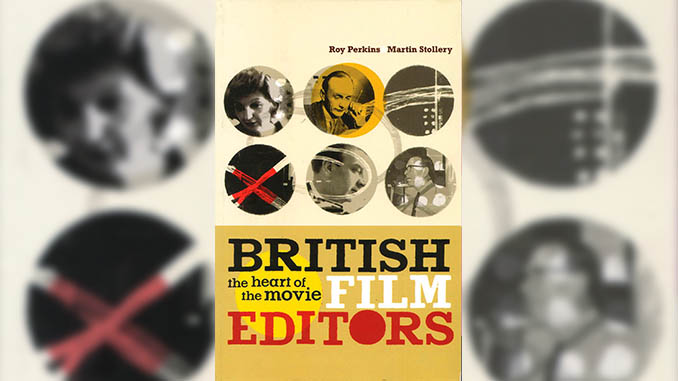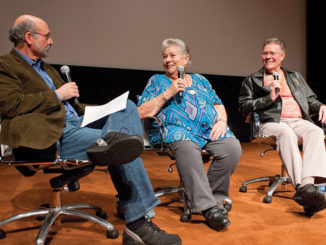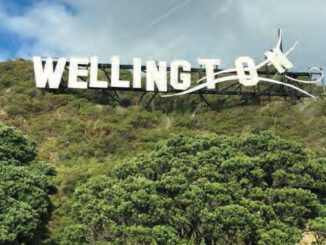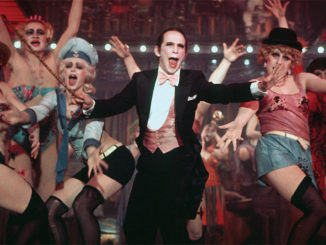
by Ray Zone
British Film Editors:
The Heart of the Movie
By Roy Perkins and Martin Stollery
University of California Press
255 pages, paperbound
ISBN 1-84457-008-8, $27.50
The title of this book is a little misleading. It is actually a uniquely comprehensive discussion of the art and craft of editing––with considerable film history to boot. In the introduction, the authors themselves admit as much. “The focus of interviews and analysis has been on feature film production and discussion has inevitably strayed beyond the UK, reflecting the shift from studio-based employment to international freelancing,” they write. “There are more similarities than significant differences in production practice between Britain and Hollywood, and although attempts have been made to foreground examples drawn from British filmmaking, the American production context has been cited where relevant.”
Over 30 different editors were interviewed during the preparation for this book. The authors state that a wider appreciation of the critical role of editing in film production is long overdue. Chapter 1, in fact, attempts to explain the exclusion of editors from most written accounts of filmmaking. This problem of recognition for the editor may be, in part, a result of the “auteur” theory in which the director is perceived as solely responsible for a film’s “meaning.” Andy Medhurst, in a 1991 article in Sight and Sound magazine, characterizes this perception, so-favored by academics, as “a comforting fantasy, restricting a potentially threatening diversity of interpretation, and giving secondary status to other analytical frameworks.” Though this unrealistic focus on the director as author was integral to inaugurating film studies as a university discipline in both America and Britain, it fails to account for the complexities of collaboration in film production.
The authors cite several instances in which editors deliberately took a low profile. Fred Clarke, supervising editor at MGM-British, in editing John Ford’s 1953 film Mogambo, even shot additional footage to complete the film to make up for the director’s lack of coverage and never told Ford about it. It was Clarke who also edited Michelangelo Antonioni’s Blow-Up (1966) and was “closed down” by the director during cutting but completed the film nevertheless and subsequently refused an editing credit. Not many directors, and certainly not the authors of this volume, share Antonioni’s opinion that the editor is merely “a pair of hands.”
The continuing presence in Hollywood of so many leading British editors, Anne Coates suggests, is the result of long craft apprenticeships in which British technicians worked their way up through challenging systems that could not be replicated in film schools.
In demonstrating the importance of the editor, the authors also cite an article by Guild officer Rachel Igel titled “I’ll Let the Film Pile Up For You” from the Motion Picture Editors Guild’s 1996-97 Directory of Members. Igel interviewed Mary Tomasini regarding her husband George’s collaboration on nine films with Alfred Hitchcock, including Psycho (1960), famous for its editing tour-de-force of the shower sequence, which is printed “flipbook” style on the lower right and left corner pages throughout that Directory.
“Mr. Hitchcock always gave George first cut,” recalled Mary Tomasini. “He wanted to see his interpretation.” Tomasini always rejected Hitchcock’s attempt to put him under exclusive contract. “Sometimes the screenplays that he [Hitchcock] was doing didn’t come together very quickly, and George liked to work. So Mr. Hitchcock said that they would make an agreement that he could do pictures for other directors in between, but after a picture was finished, Mr. Hitchcock would have first dibs on him. He said, ‘I’ll let the film pile up for you.’ So that’s the way it worked.”
The second chapter of the book deals with the film editor’s role and draws heavily on the varied interview material. Discussion of editing as a craft is elusive for many practitioners who draw upon different analogies to describe their work. Terry Rawlings (see attached story) likens editing to building a house and says of the editor’s role, “You’re the builder.” David Gladwell compares the work to that of a sculptor, and Mick Audsley to that of a painter. Jim Clark opines that it’s “very much like knitting a sweater with a pattern in it.” John Bloom says, “It’s rather like an air traffic controller, you know, everything has to go right until something goes wrong, in which case it’s a disaster, but nobody pays too much attention to what air traffic controllers do every day.”
The continuing presence in Hollywood of so many leading British editors, Anne Coates suggests, is the result of long craft apprenticeships in which British technicians worked their way up through challenging systems that could not be replicated in film schools.
Over 30 different editors were interviewed during the preparation for this book. The authors state that a wider appreciation of the critical role of editing in film production is long overdue.
The third chapter of the book, “Aspects of British Editing from the Beginnings to the 1950s,” presents a concise history of cinema itself in Britain. Editors first received film credits in Britain in the later 1910s and a division-of-labor system was devised early on. A section on post-1950s editing addresses Hollywood in Britain with American-financed big-budget films and the trend to produce films which would appeal to audiences on both sides of the Atlantic.
Discussions of stylistic developments and the future of editing and technological change round out this book, along with selected filmographies and a useful bibliography. Whatever side of the pond you’re from, if you’re interested in film editing, this volume is too replete with information on the craft to ignore.





